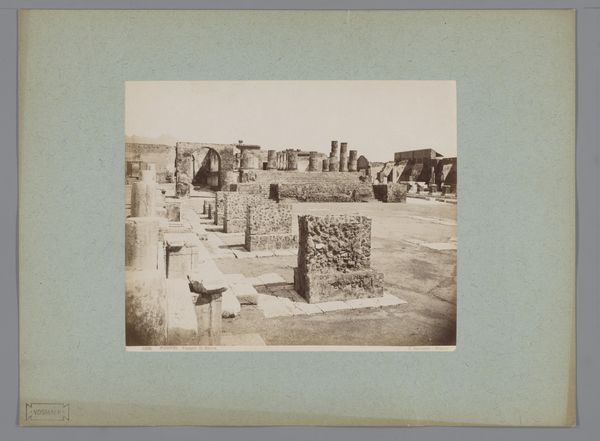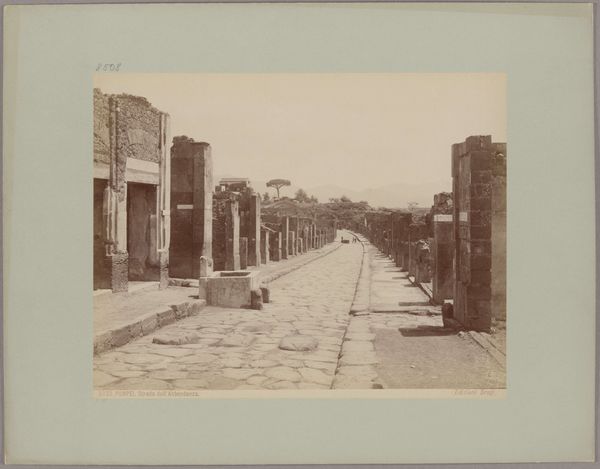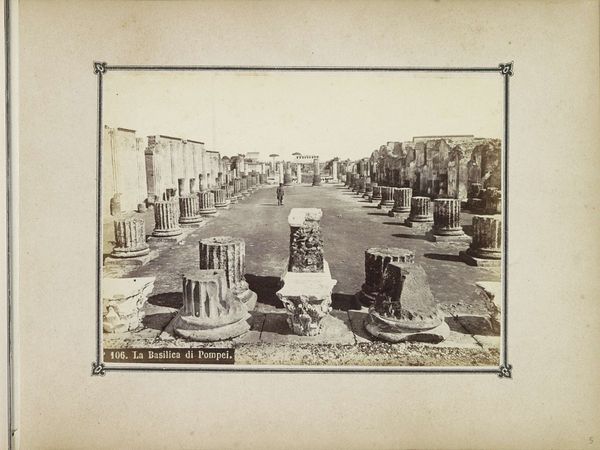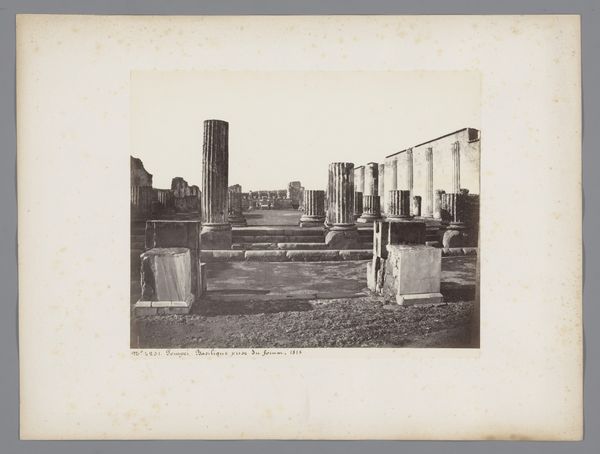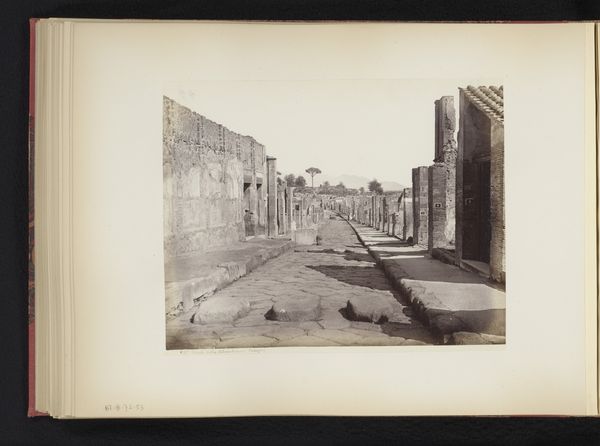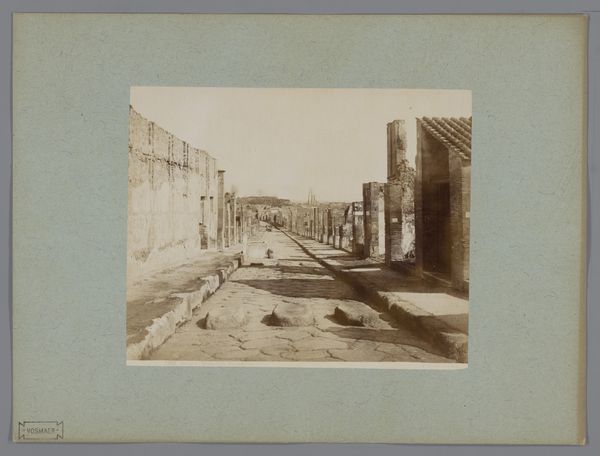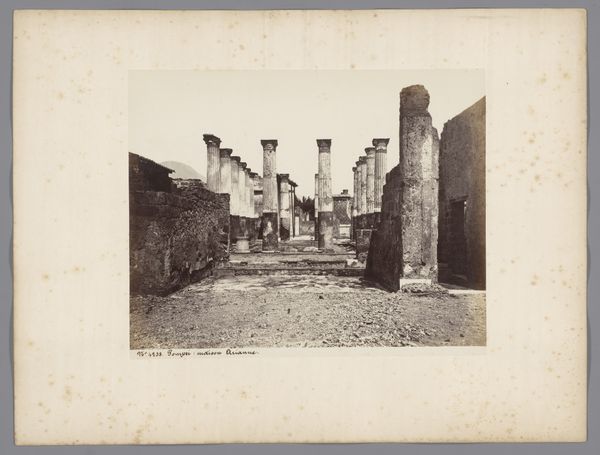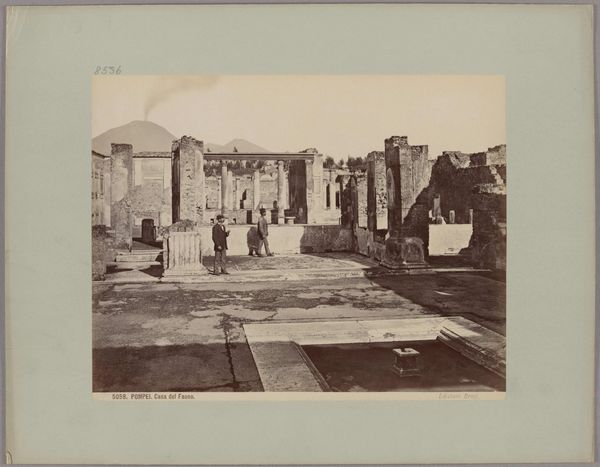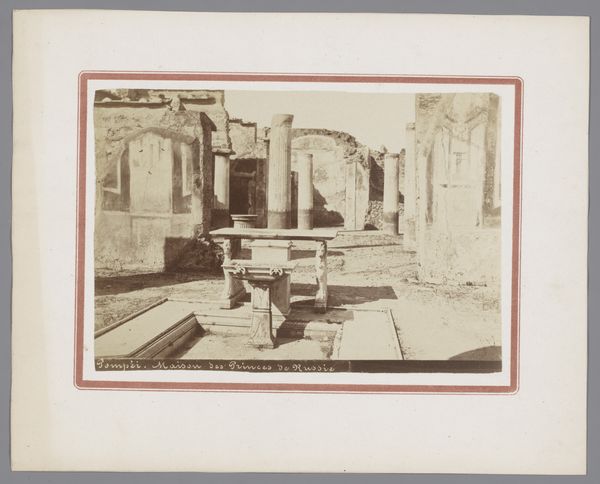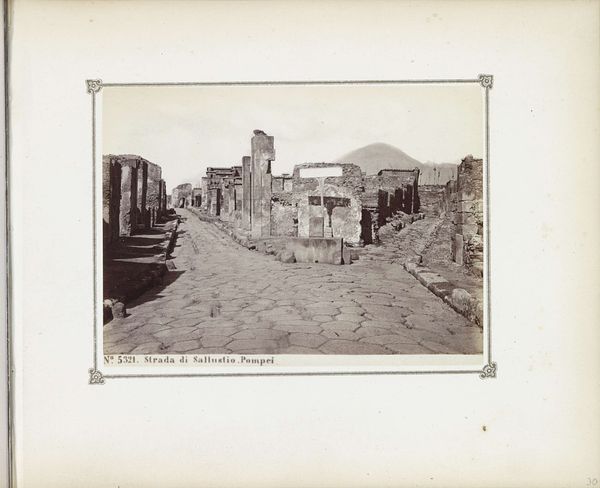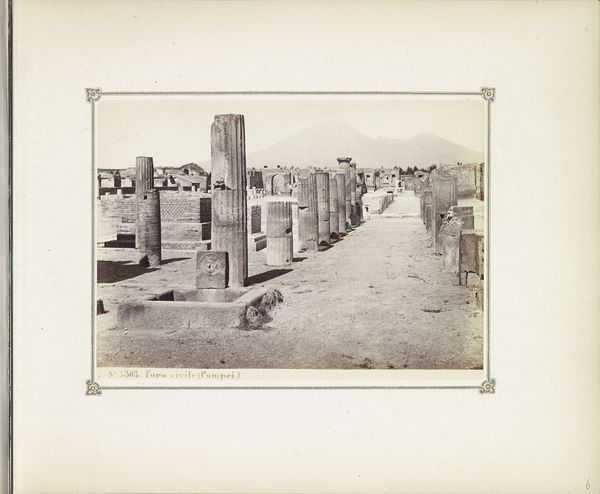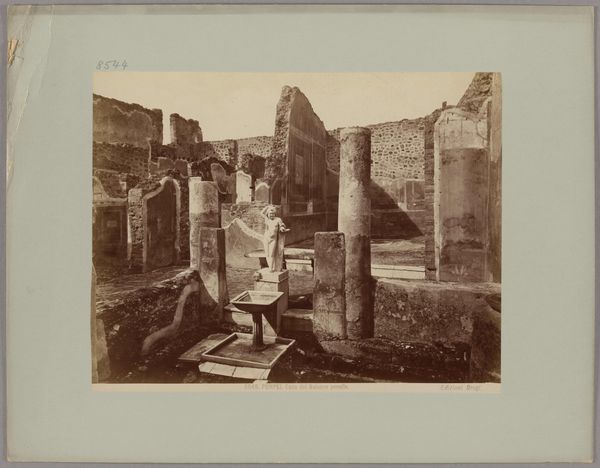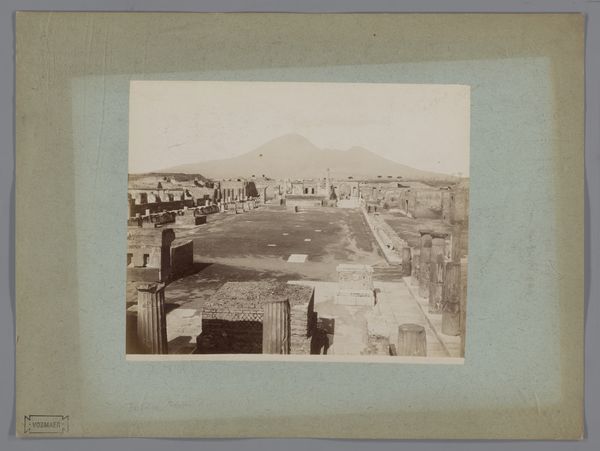
photography
#
landscape
#
photography
#
ancient-mediterranean
#
cityscape
#
realism
Dimensions: height 314 mm, width 421 mm
Copyright: Rijks Museum: Open Domain
Curator: Giorgio Sommer, between 1857 and 1875, captured this serene yet melancholic view titled "Gezicht op de ruïne van de Basilica te Pompeï, Italië"—a glimpse into the past, frozen in time, currently housed in the Rijksmuseum. Editor: Immediately, I’m struck by the stillness—a poignant snapshot. The ruins in sepia tones give the picture a somber, almost ghost-like presence. It whispers of life interrupted, silenced by Vesuvius's wrath. Curator: Indeed. The image gives a potent, accessible window into archaeological fervor of the time. Sommer skillfully leverages photography to document the basilica ruins. His image becomes not merely an aesthetic rendering, but an artifact, documenting a vital historical moment. Editor: Absolutely. What strikes me too, is that what remains physically becomes a symbol for other things destroyed - freedoms and entire civilizations crushed by unchecked power. How many voices went unheard, unseen within these ruins? The columns stand like ghosts refusing to be silenced. Curator: That’s a pertinent reading of the image’s symbolism. What's interesting, however, is how Sommer chooses his vantage point, creating an interplay of perspective—juxtaposing ruins and sky to elicit a sense of expanse, connecting this micro history with larger currents. Editor: But that artistic perspective can't obscure that the ruin became part of grand tours which bolstered the economies of empires, many of which, like the slave trades and colonization, were achieved on the backs of marginalized peoples whose identities became footnotes to art such as this. The beauty co-exists with painful historical injustices. Curator: And this highlights a vital discussion—that art must never stand outside societal constructs; rather it both molds and mirrors it. Photography, too, with its documentary powers, carries heavy responsibility. Editor: I think photographs of this nature are useful in the modern age, because although ruin may appear starkly unique, it is universally connective. Even if physical sites aren't the same, the underlying societal concerns continue to ring out in different eras. Curator: I agree. "Gezicht op de ruïne van de Basilica te Pompeï, Italië" invites contemplation beyond history— urging engagement within ethical dialogues on what, how, and who becomes immortalized by human endeavor.
Comments
No comments
Be the first to comment and join the conversation on the ultimate creative platform.
